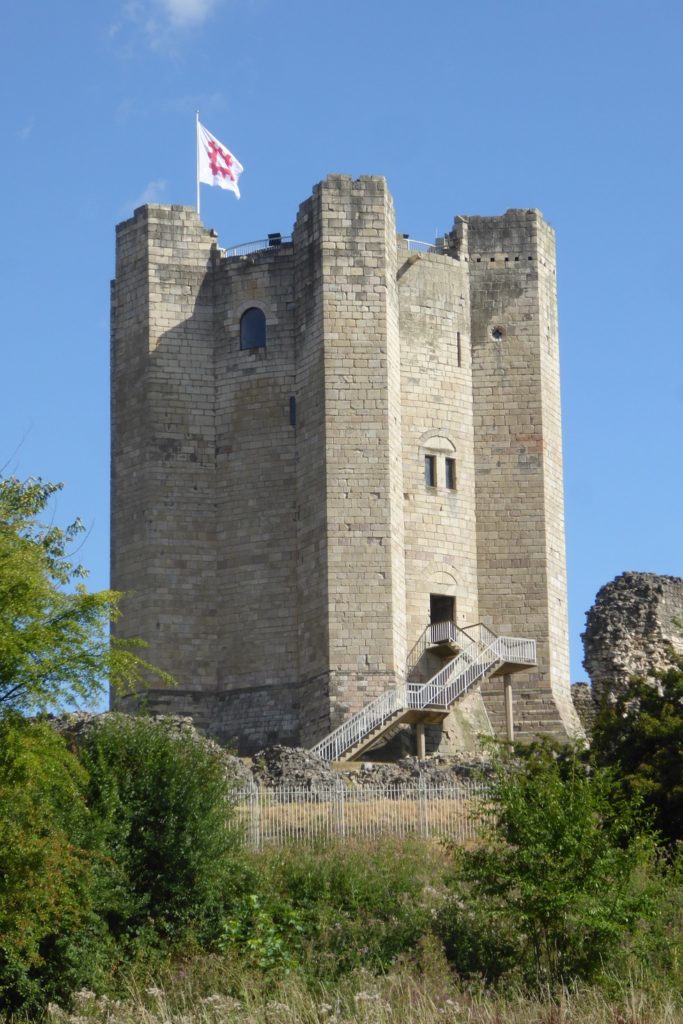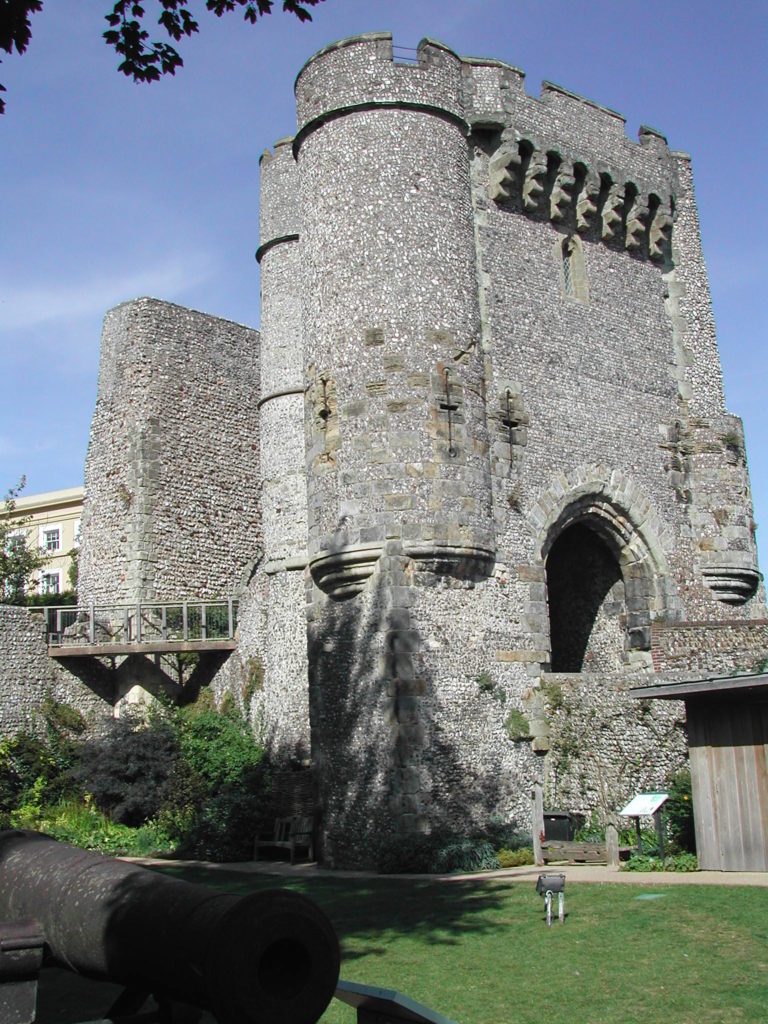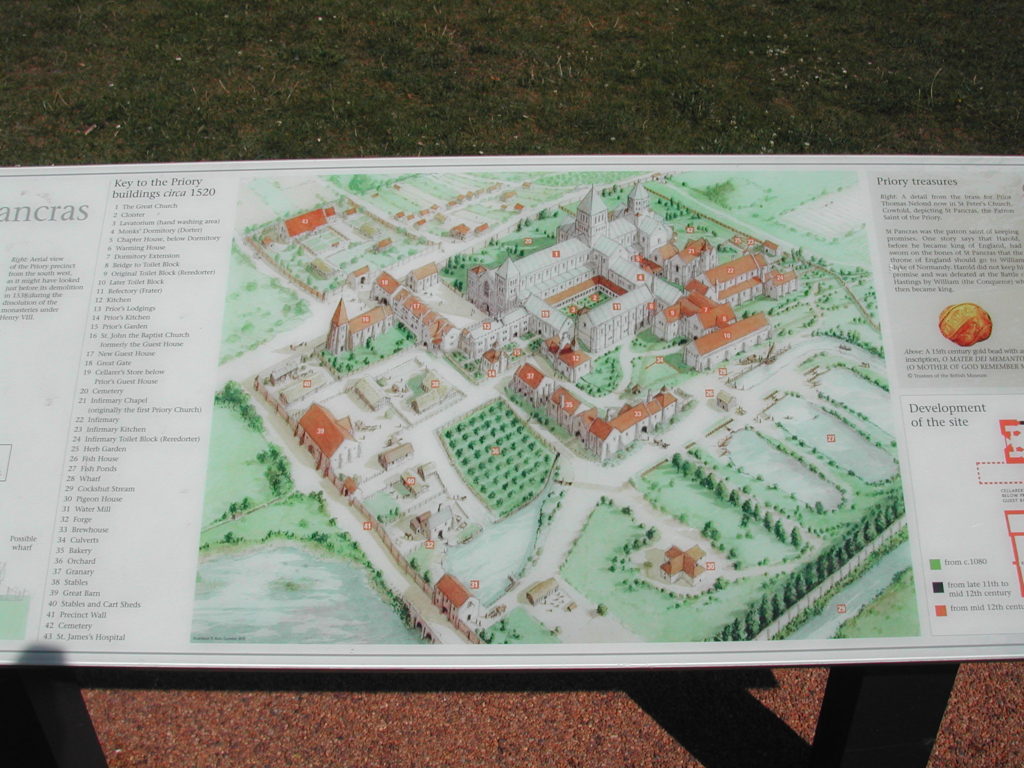The name Varenne is given to river which rises in Saint-Matin-Osmonville, crosses Saint-Saëns and Bellencombre before joining the Béthune and the Eaulne to form the Arques which finally discharges into the English channel at Dieppe. The name of Dieppe comes from the scandinavian word « Djupr » meaning deep.
Originally Bellencombre had the name « Vuarinna » (Varenne) being the name of one of the first Lords of the manor « Guillaume de Varenne » (William de Warenne or Warren). Bellencombre is a military name. This William de Warenne was the first of the name to distinguish himself for his bravery in 1054 at the battle of Mortemer (Mortemer-sur-Eaulne). Following a difference between Roger de Mortemer, brother of William de Warenne, and William the bastard, Duke of Normandy, the duke confiscated Mortemer’s land and properties and awarded them to William de Warenne.
William de Warenne, continuing his good relationship with William, Duke of Normandy, took part in the invasion of England in 1066 and was rewarded for his loyalty and services by very generous grants of land on which in due course he built several castles, vis : Lewes, Reigate, Castle Acre, Conisbrough, Holt, Sandal Magna, Thetford, Peel Hill (Thorne), and priories at Castle Acre and Lewes, the remains of the former being one of the finest examples of Norman architecture in England.
In Shropshire, on the northern frontier between Wales and England lies the town of Whitchurch, which according to the Domesday Book of 1086 was also one of William de Warenne’s many possessions and where he built a castle or fortified manor house on Castle Hill, the remains of which were apparently visible in 1760, but have now disappeared. Whitchurch town is twinned with Neufchâtel-en-Bray – an ancient fortified town neighbouring Bellencombre. A few miles south of Whitchuch, the family Mortemer held Wigmore castle since 1075
(see Mortemer to Mortimer).

They were probably built at the end of the XIIth C. by Hamelin Plantagenet, half-brother to king Henry II maried to Isabel de Warenne..

All these edifices are now in ruins, but unlike the Norman castles of Bellencombre and Mortemer, they have been valued and appreciated following archeological excavations by modern museums that recall the « Bellencombraise » origins of the Varenne family. William de Warenne became the wealthiest baron in England and was appointed Earl of Warren in 1071 and Earl of Surrey in 1087 as part of the elite nobility.


Nous sommes allés personnellement visiter tous ces sites ce qui nous a motivé à créer l’Association de Sauvegarde du Château de Bellencombre (A.S.C.B.). Et c’est justement un historien anglais Mark Antony Lower, originaire de la région de Lewes, qui s’est intéressé en premier à notre château vers 1830, car c’est au prieuré de Lewes que furent inhumés Guillaume de Varenne et son épouse Gundrada. Grâce à lui, nous possédons plusieurs dessins du château de Bellencombre dont des vues extérieure et intérieure de l’entrée de la haute-cour ainsi que de l’ancienne église localisée à l’intérieur de la basse-cour. Les deux hautes tours en grès de cette haute-cour ont malheureusement été démantelées à partir de 1832 par un certain Dillard, pilleur de pierres, qui les revendit malgré les interventions désespérées de l’abbé Cochet, archéologue, et de son collège anglais Lower. L’église romane fut démolie en 1866 lors de l’édification de la nouvelle dans les fossés du château.

Un historique intitulé GUILLAUME DE VARENNE ET LE CHATEAU MEDIEVAL DE BELLENCOMBRE composé d’une centaine de pages, comportant de nombreuses illustrations, tableaux et cartes sera publié fin 2021 révélant les découvertes faites sur place ou dans différents musées. Des extraits ont été publiés dans le dernier bulletin des Amys du Vieux Dieppe (année 2019, fascicule CXXXI, pp. 27-44) et dans la revue Le Pucheux (Saints de Glace 2020, n°115, pp 6-9). Dans la rubrique Revue de presse de ce site, vous pouvez consulter les articles parus dans la presse régionale depuis 2016 (Le Réveil de Neufchâtel, Les Informations dieppoises, Paris Normandie, Liberté Dimanche). Trois articles ont été également publiés dans le bulletin municipal Le Bellencombrais illustré (voir rubrique du même nom).

